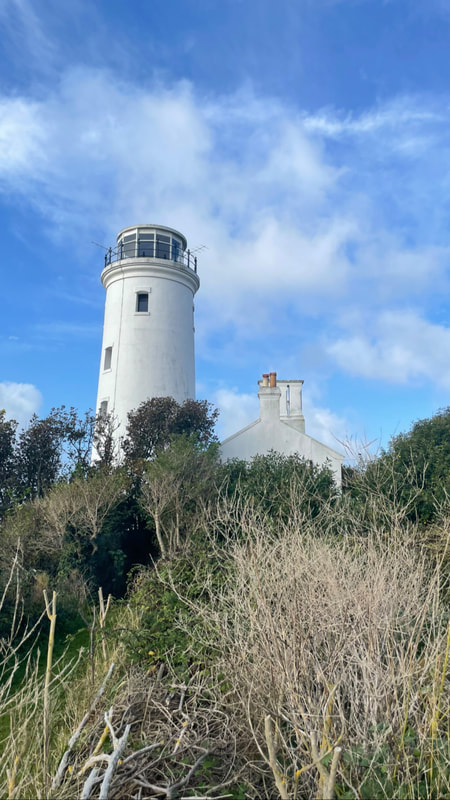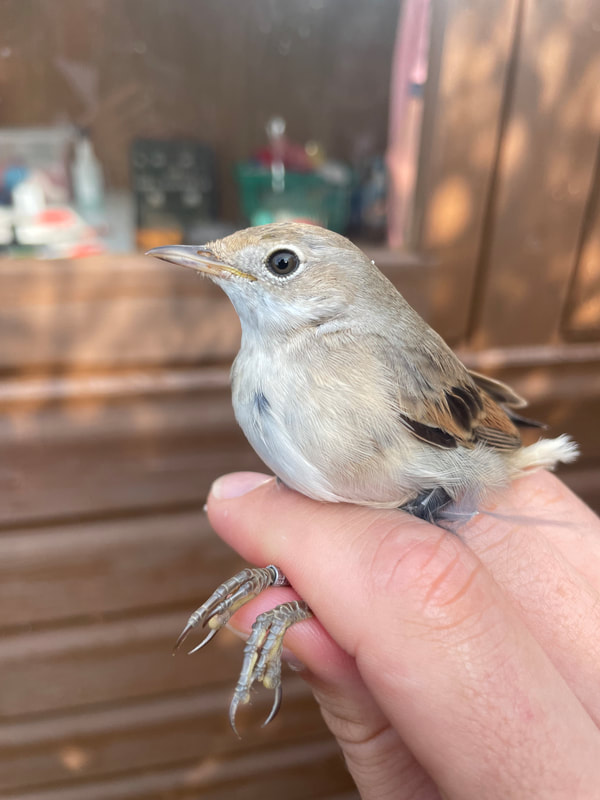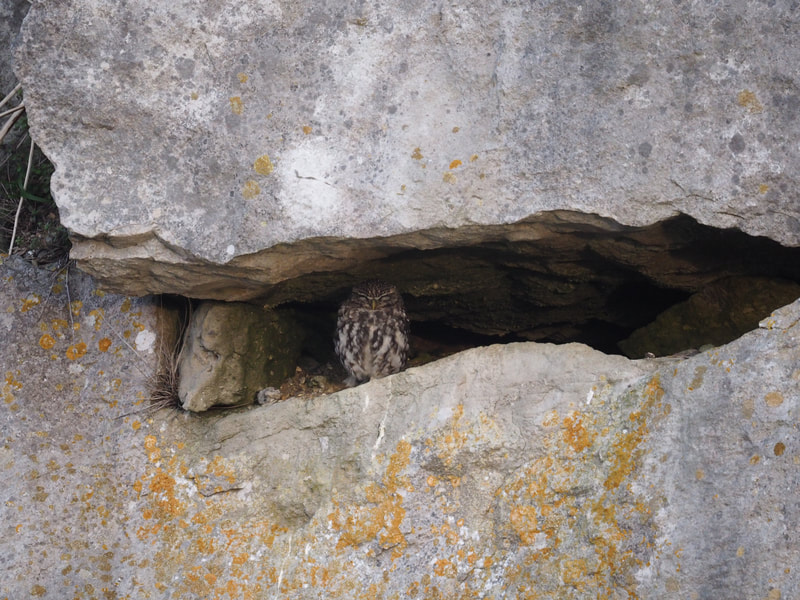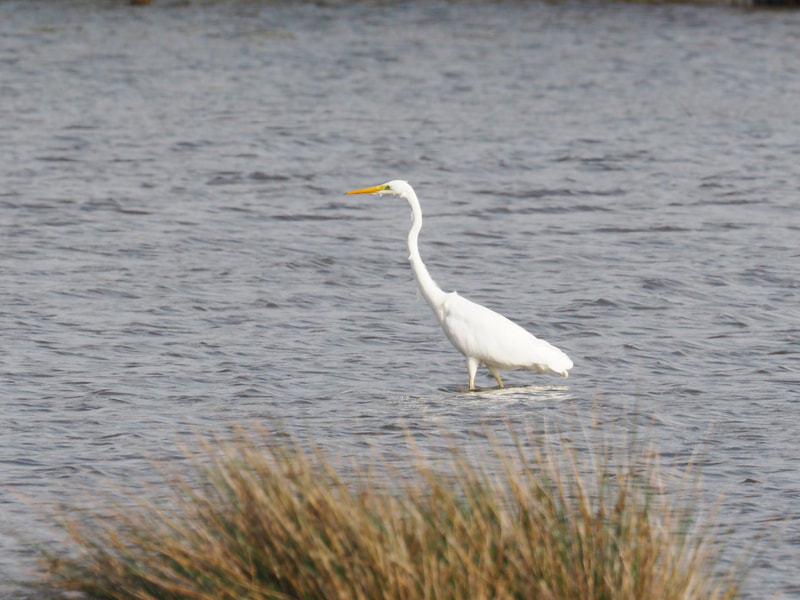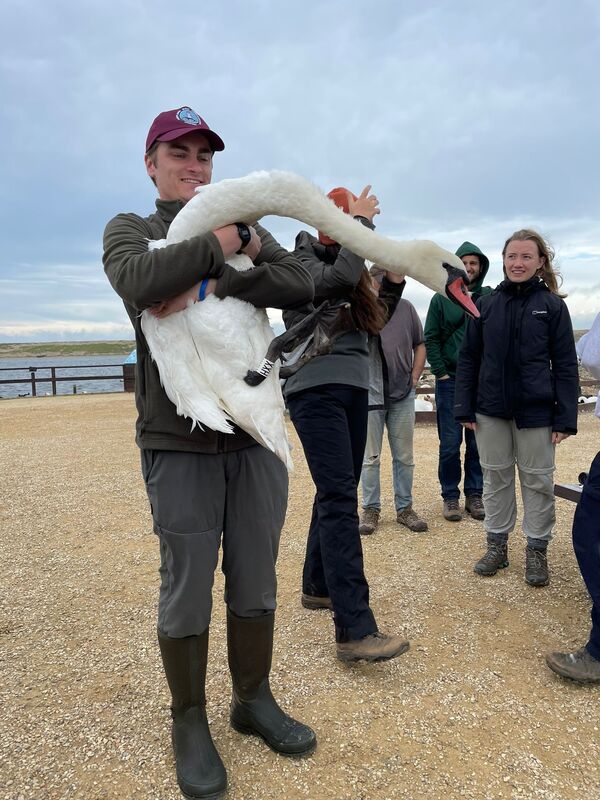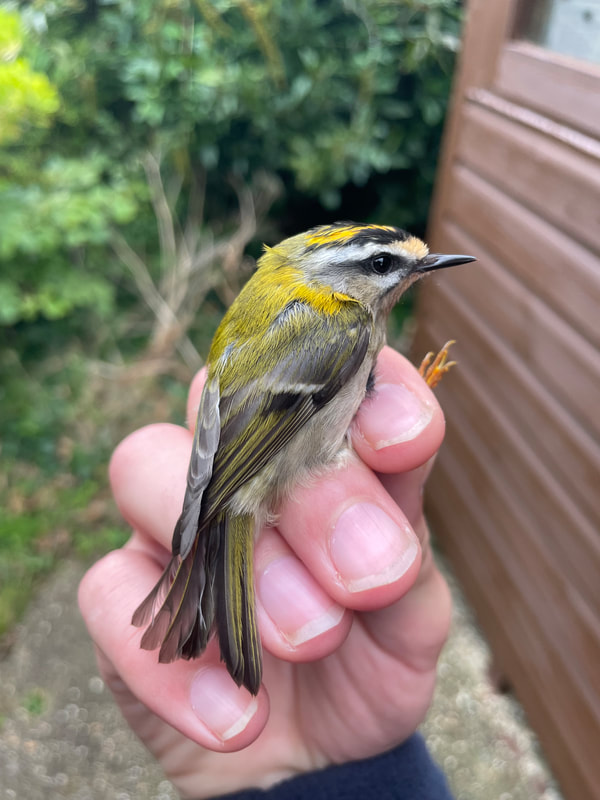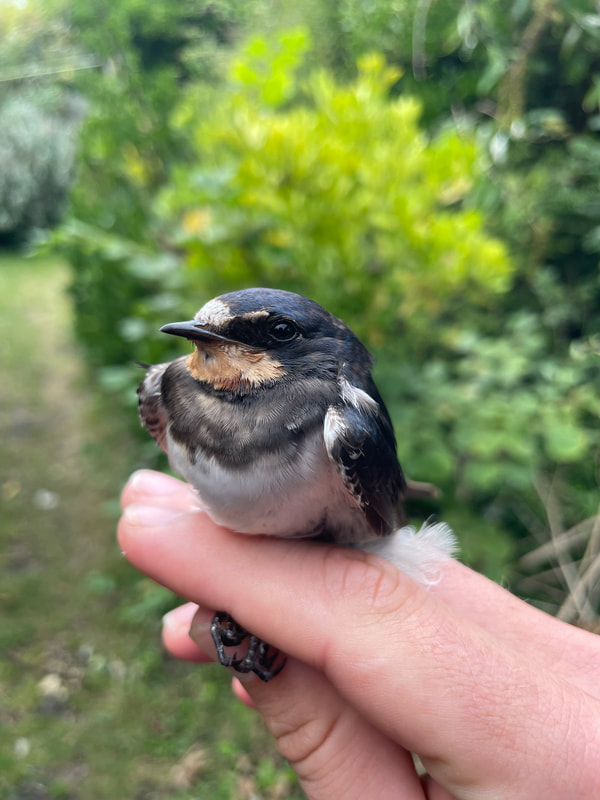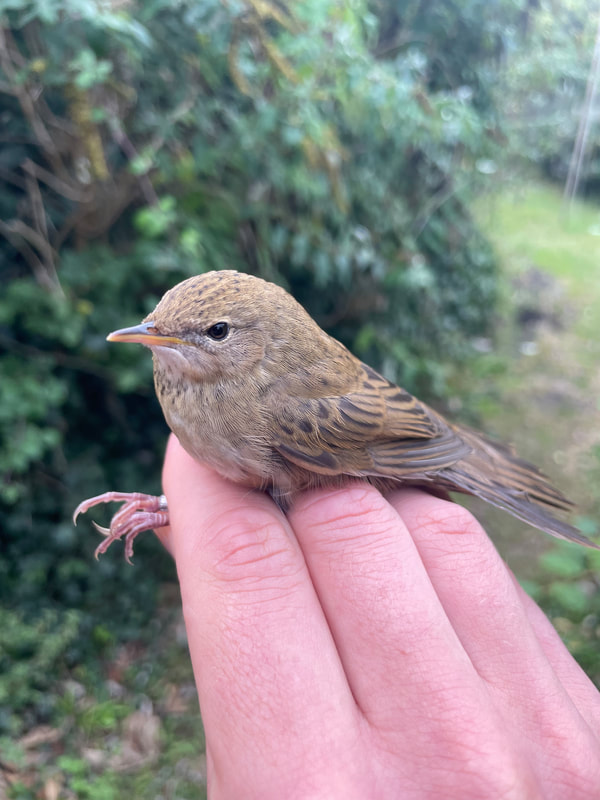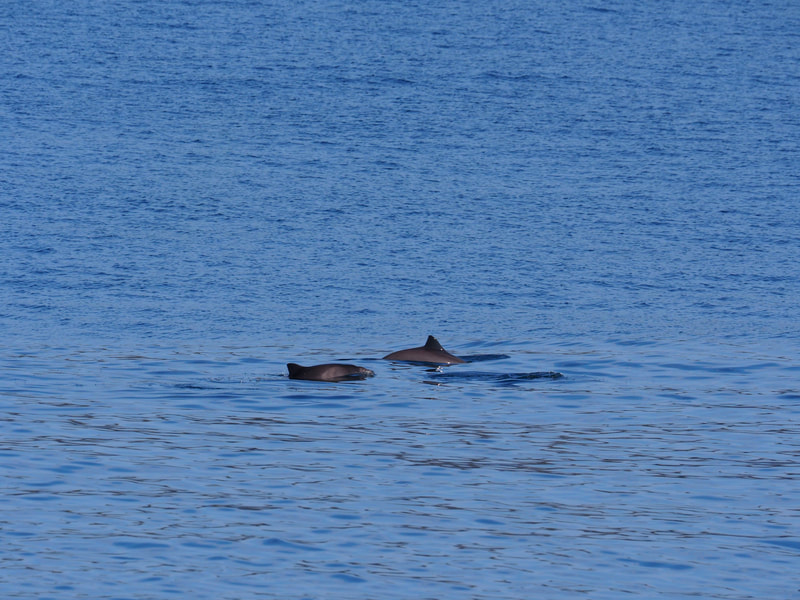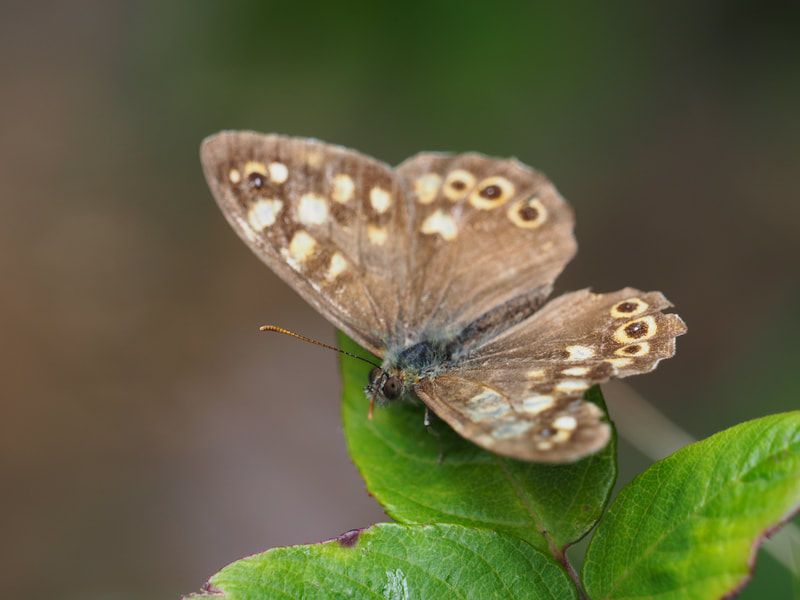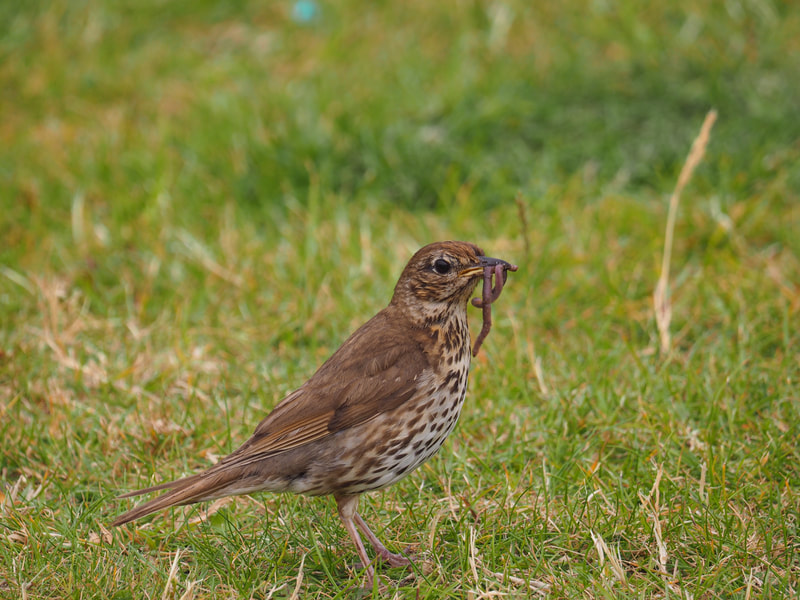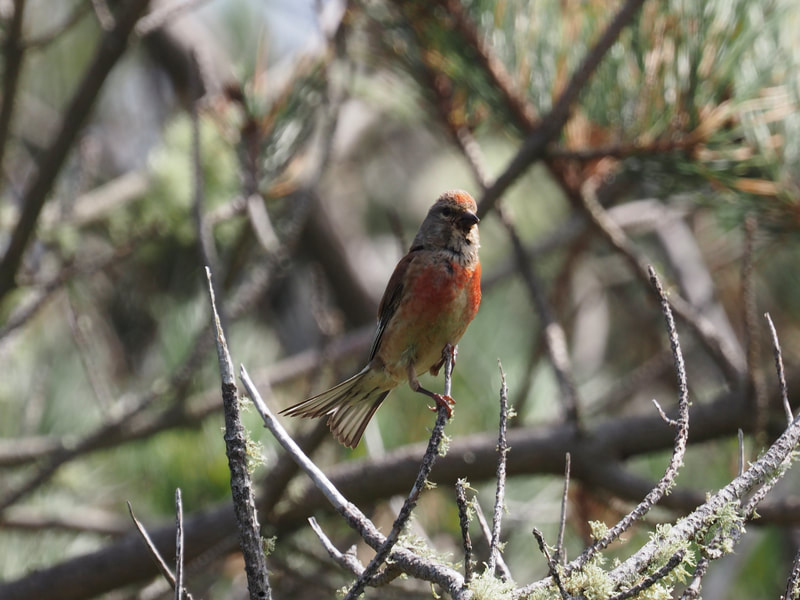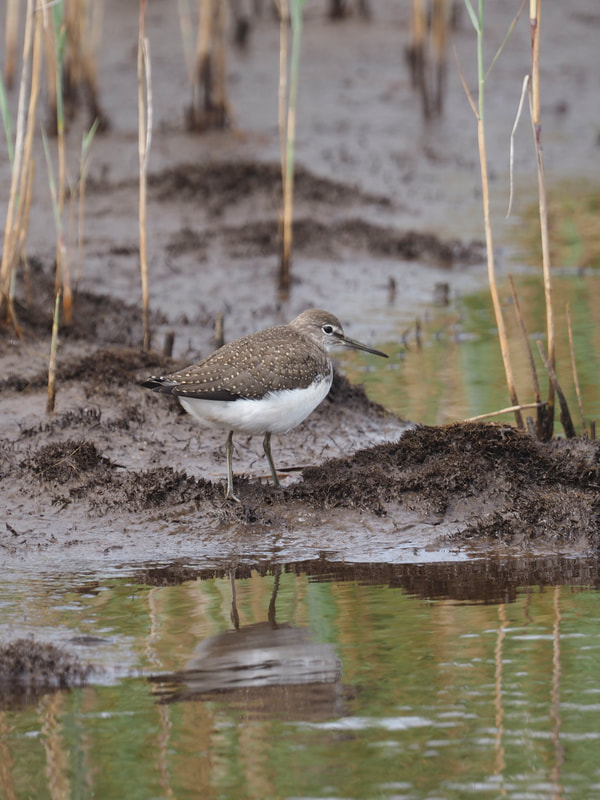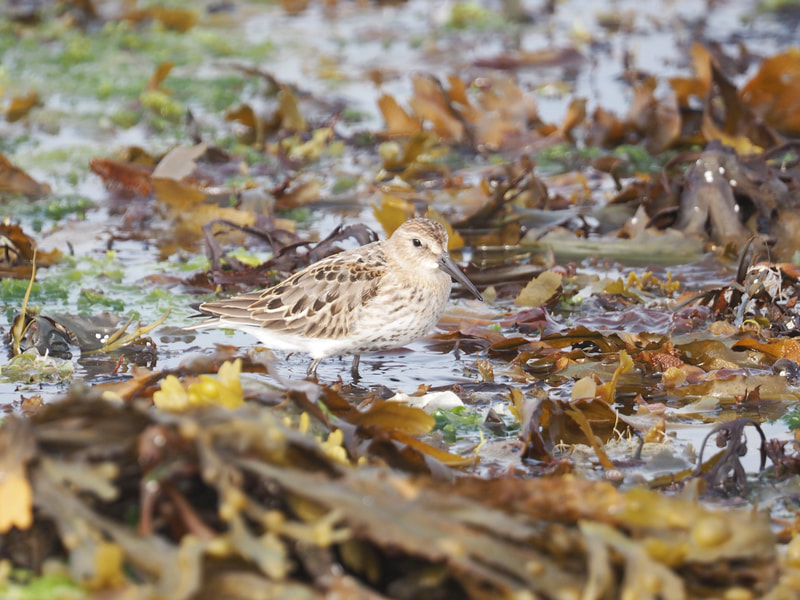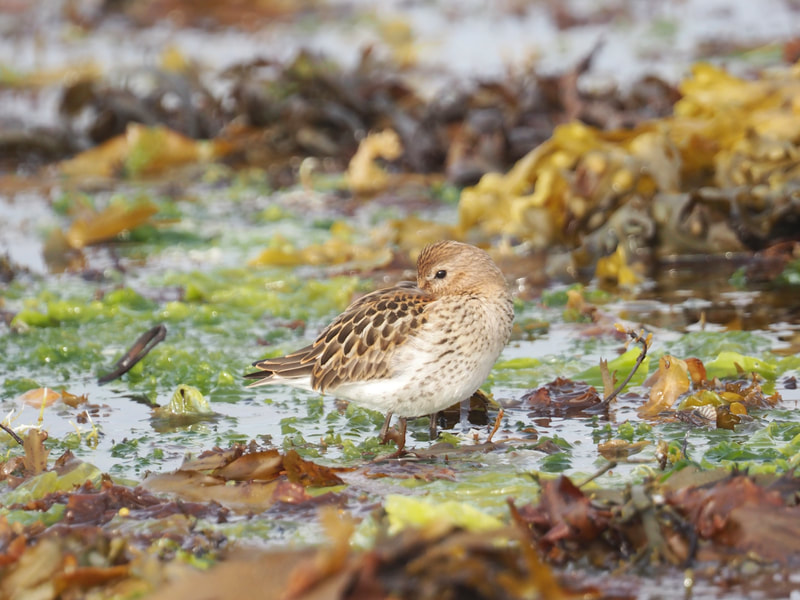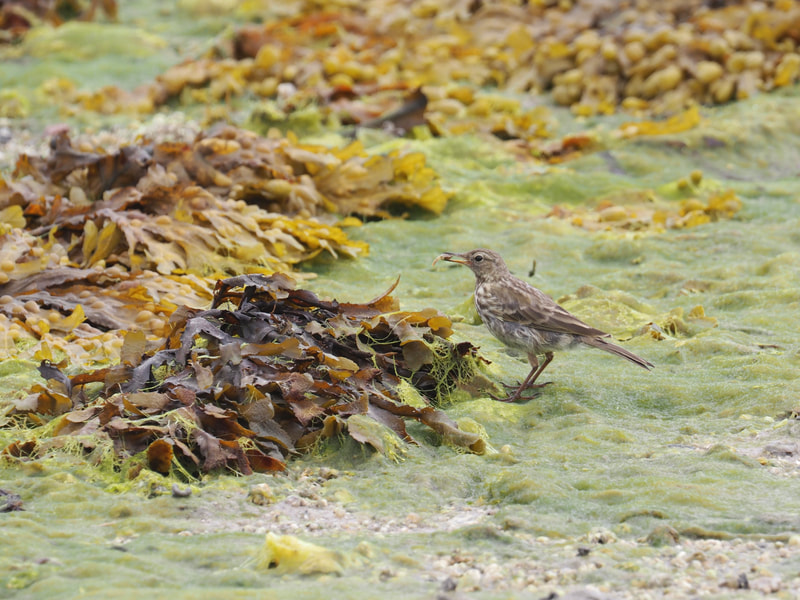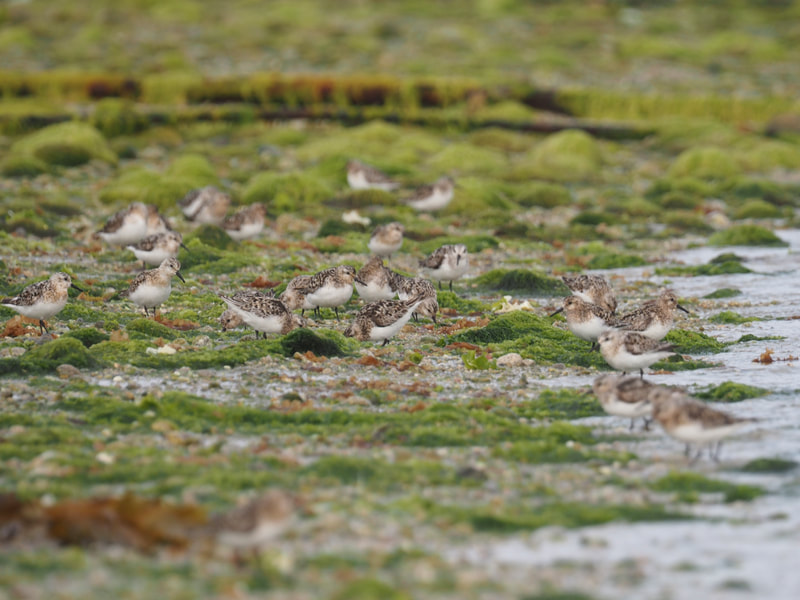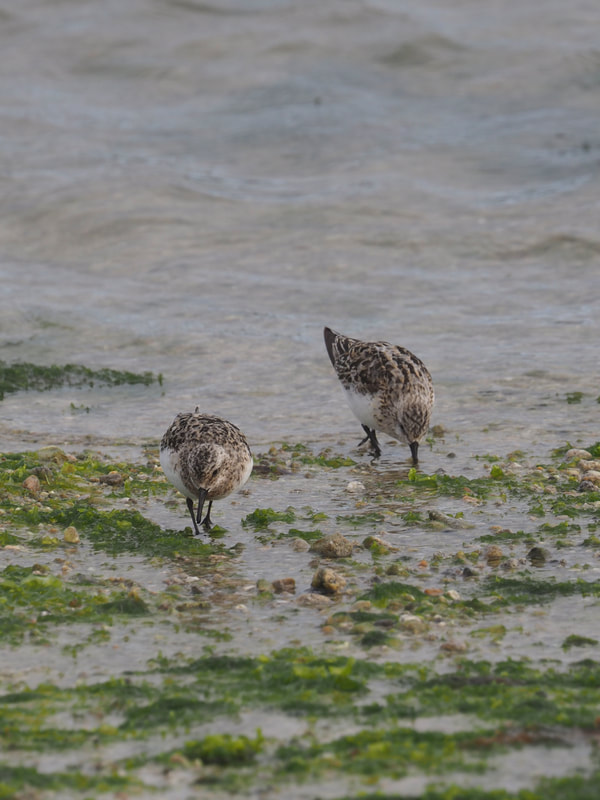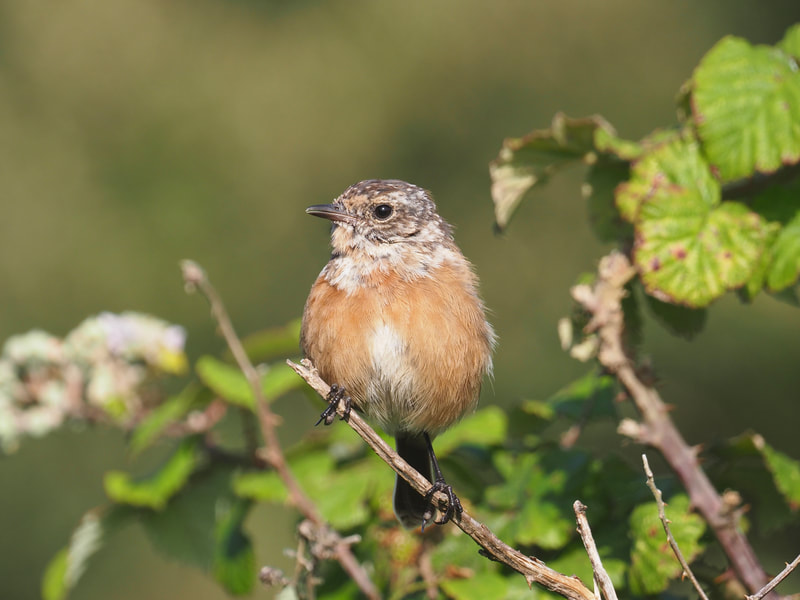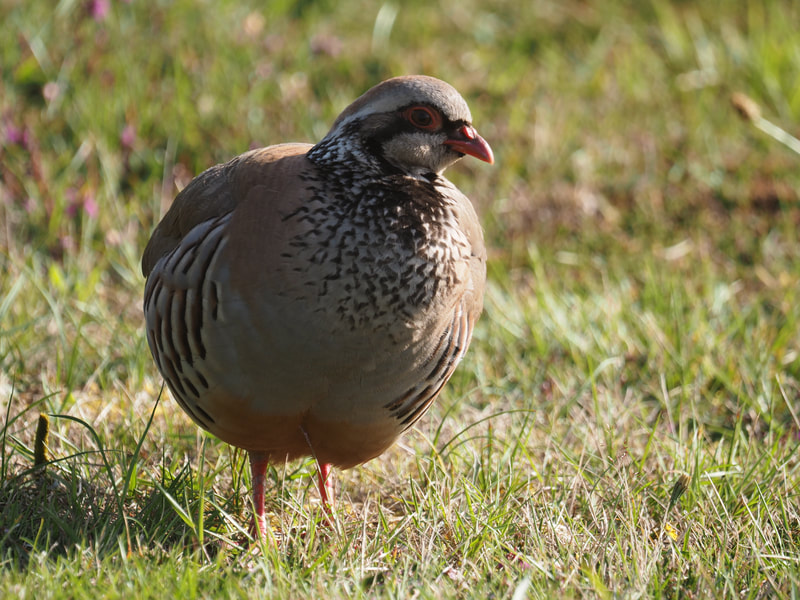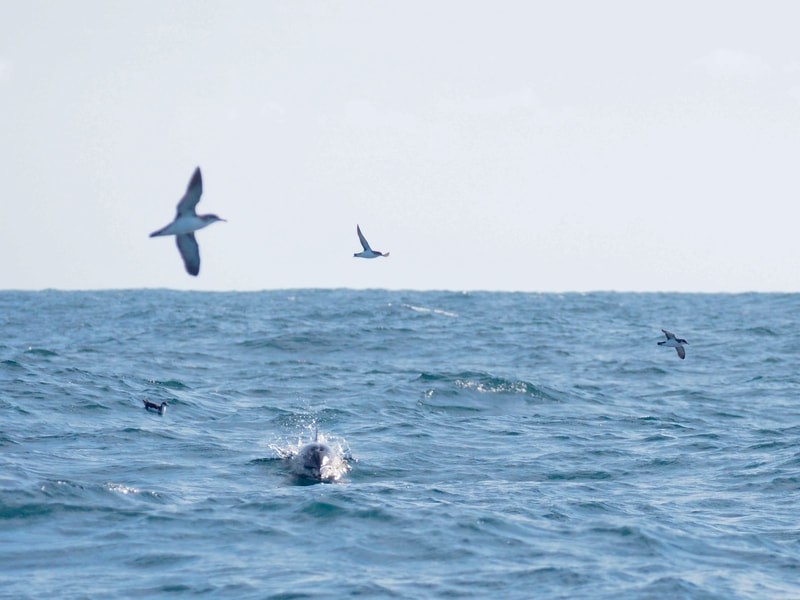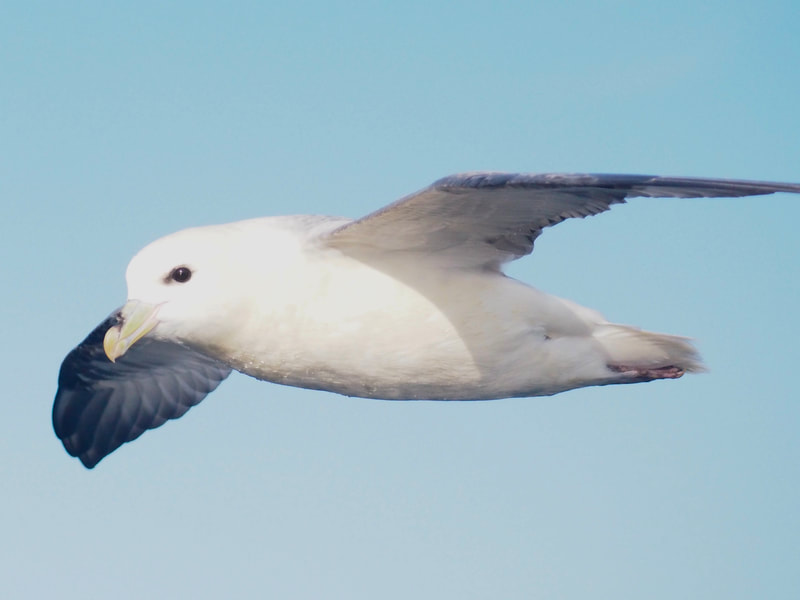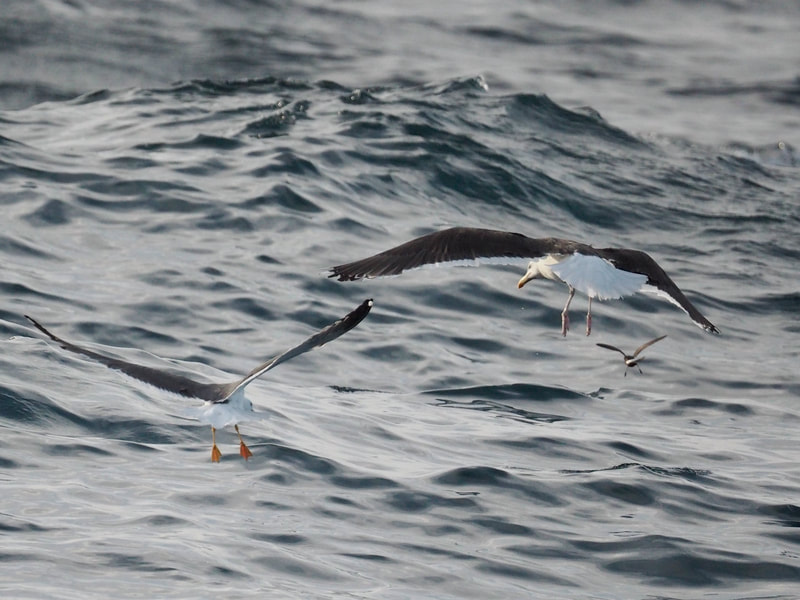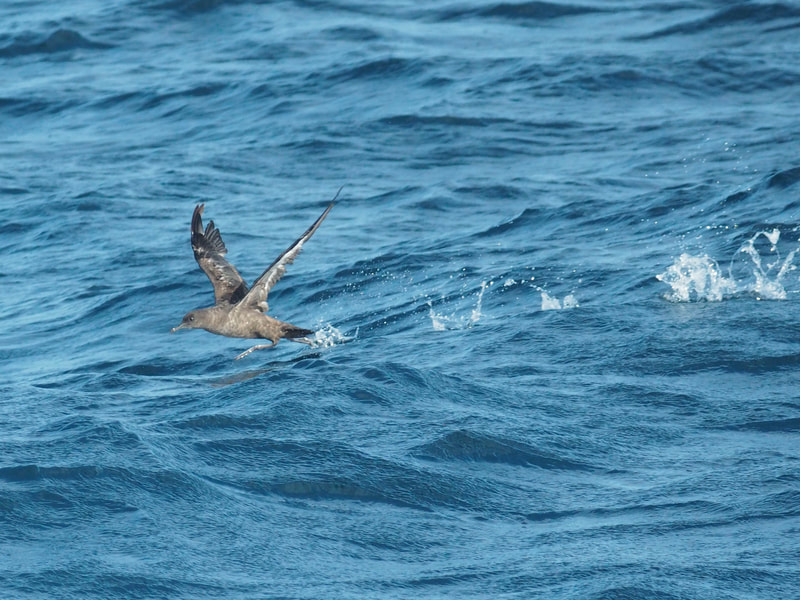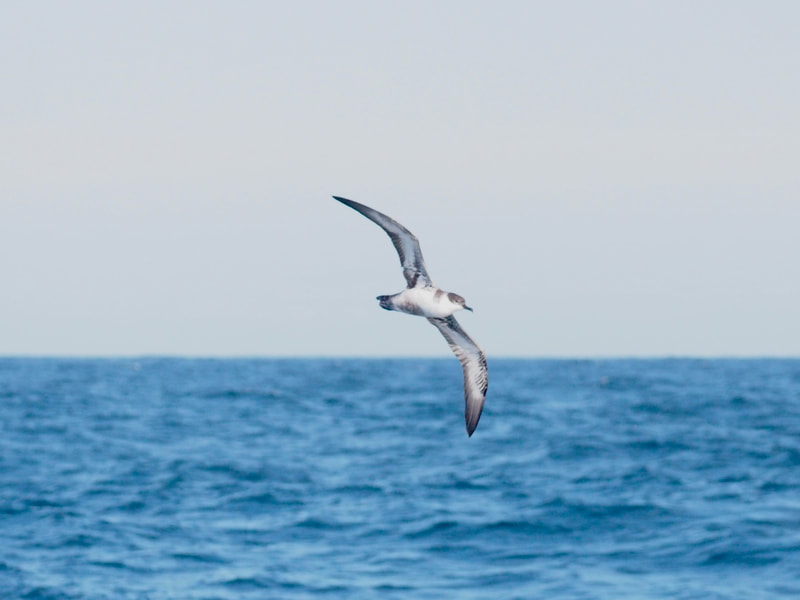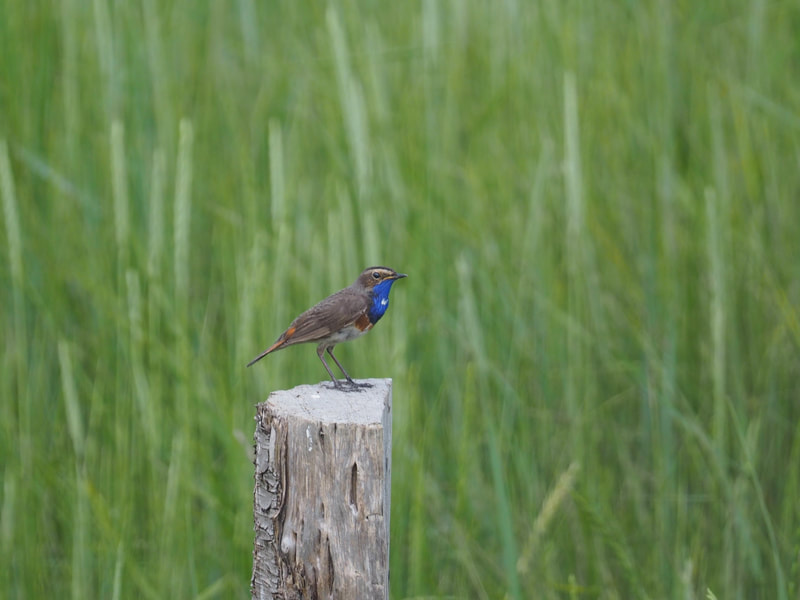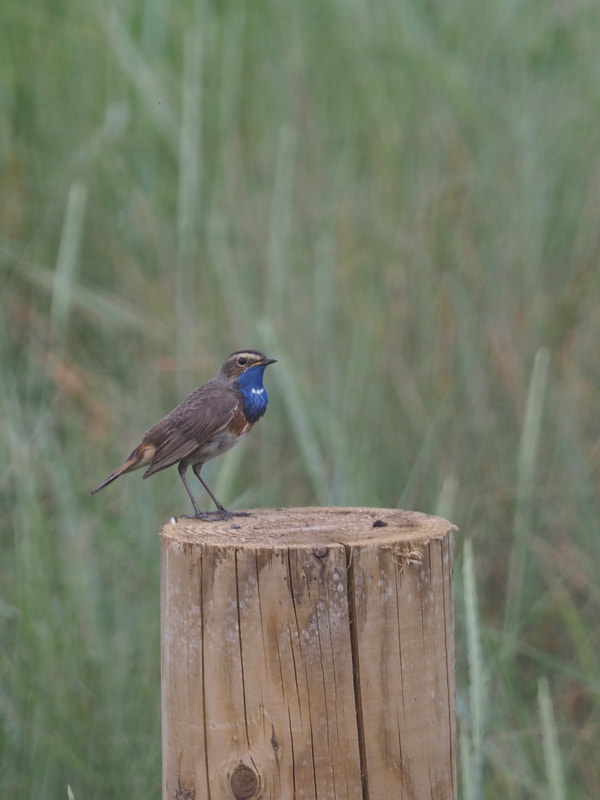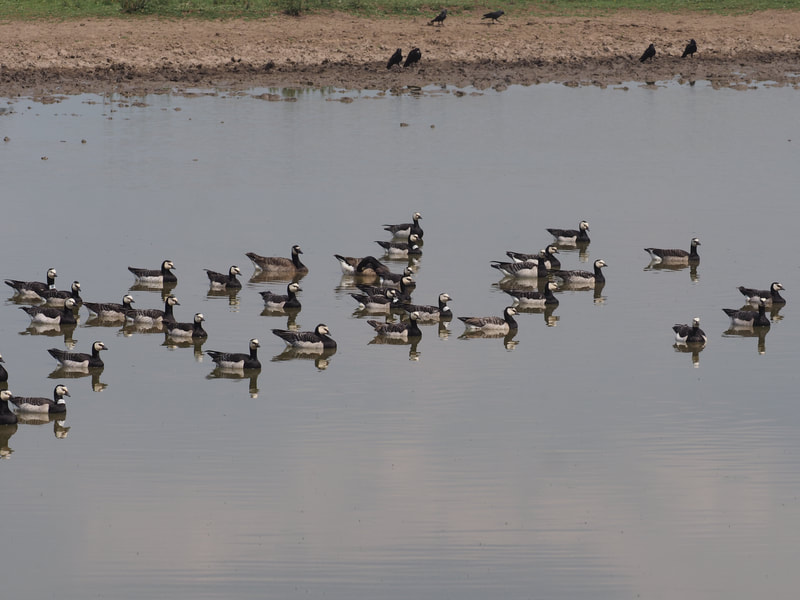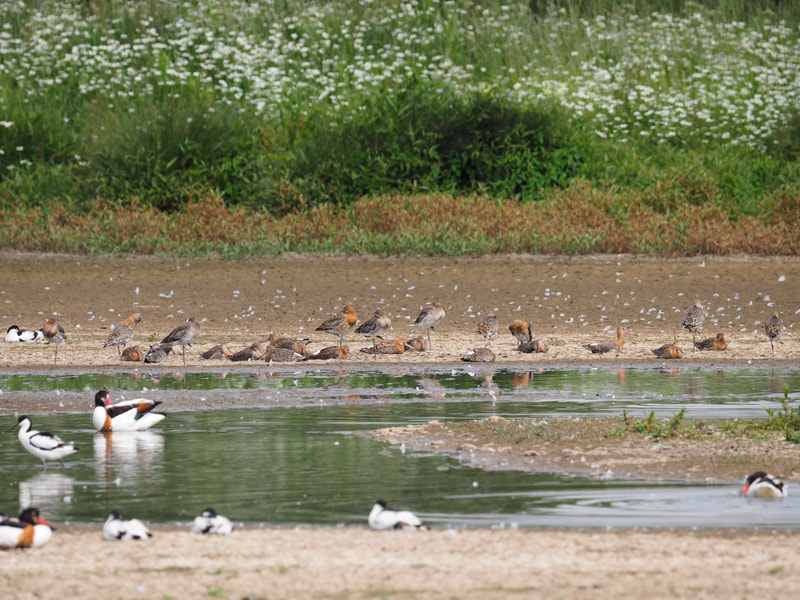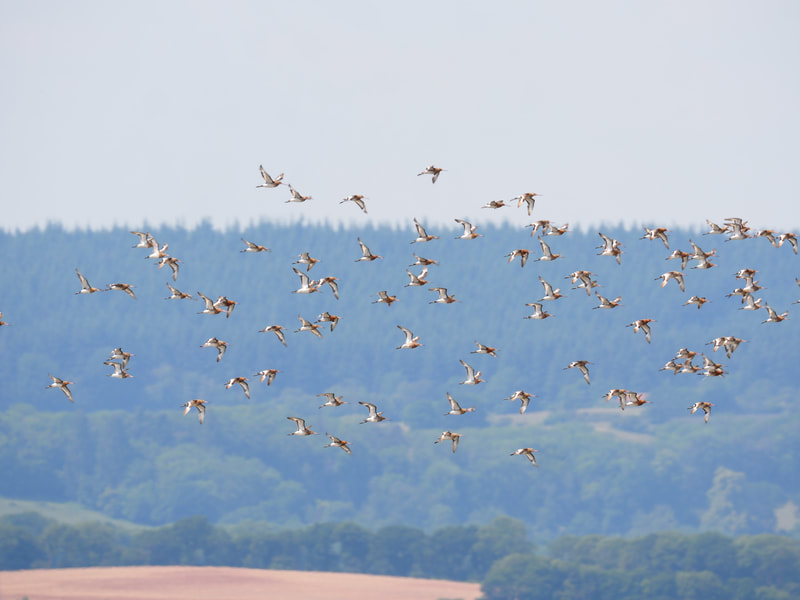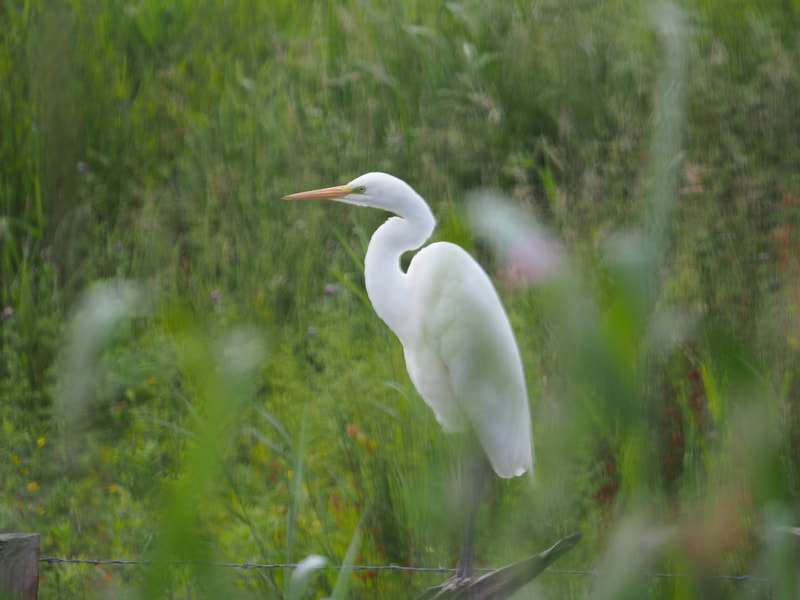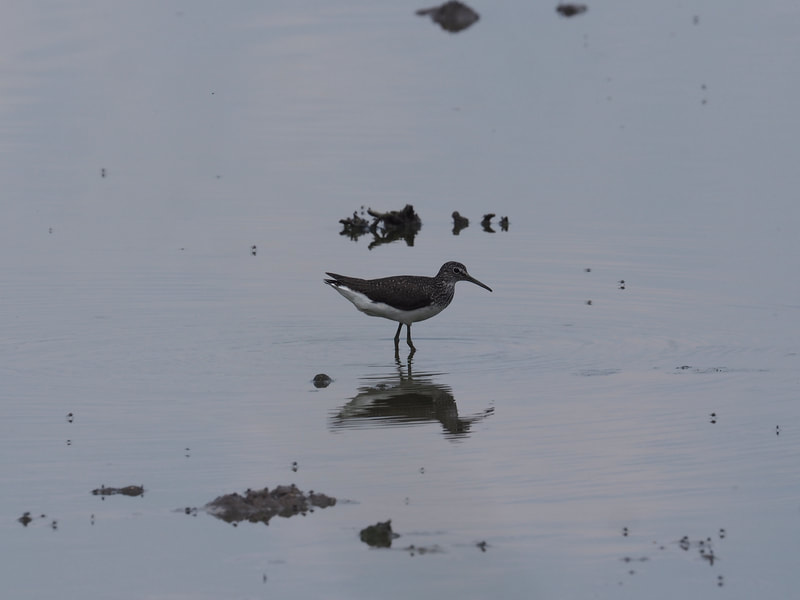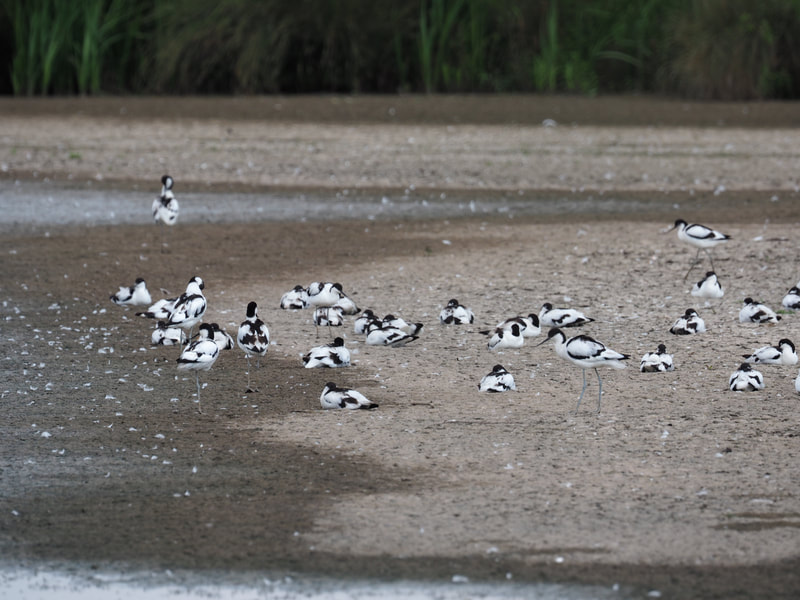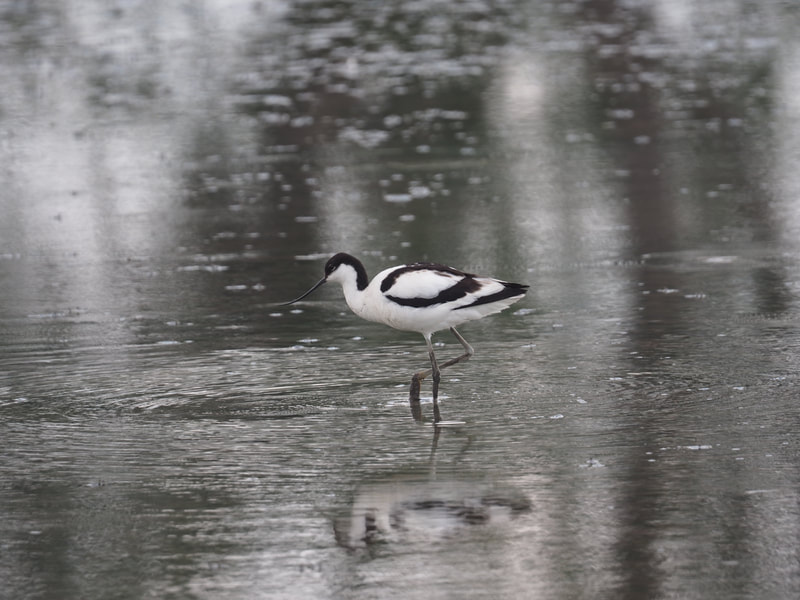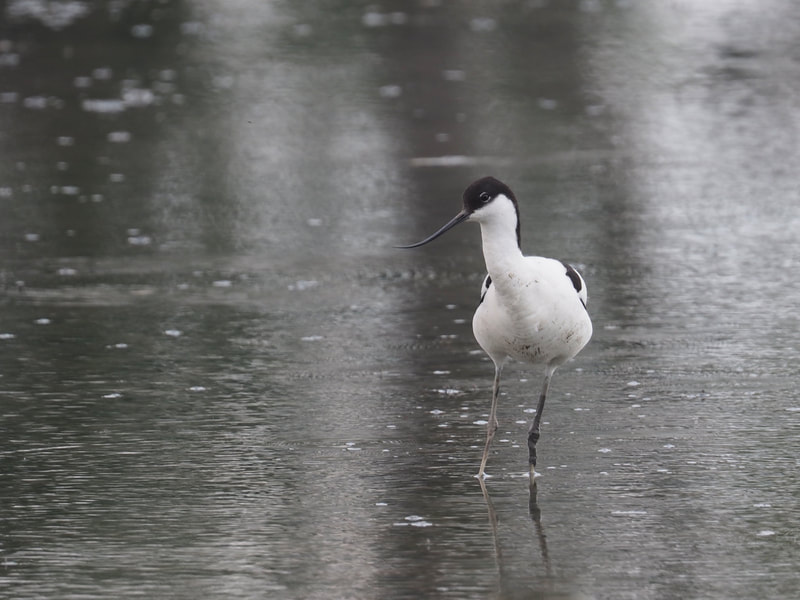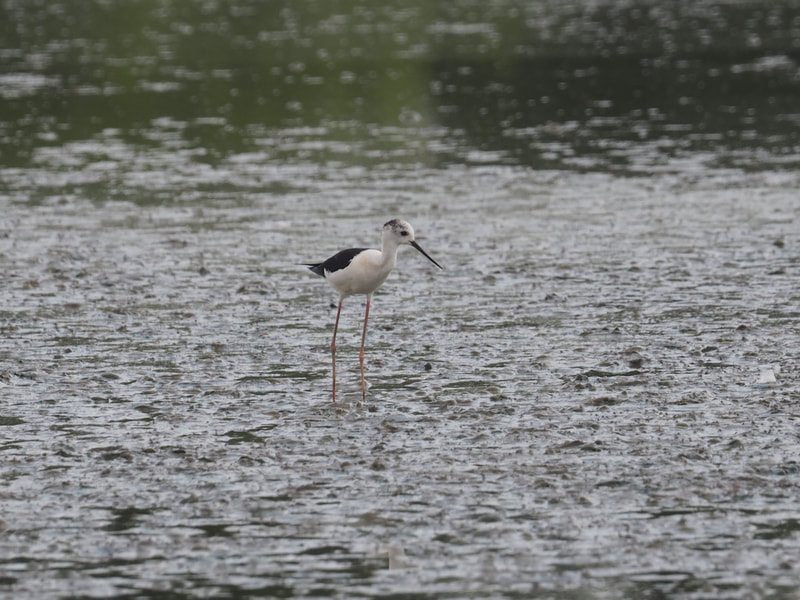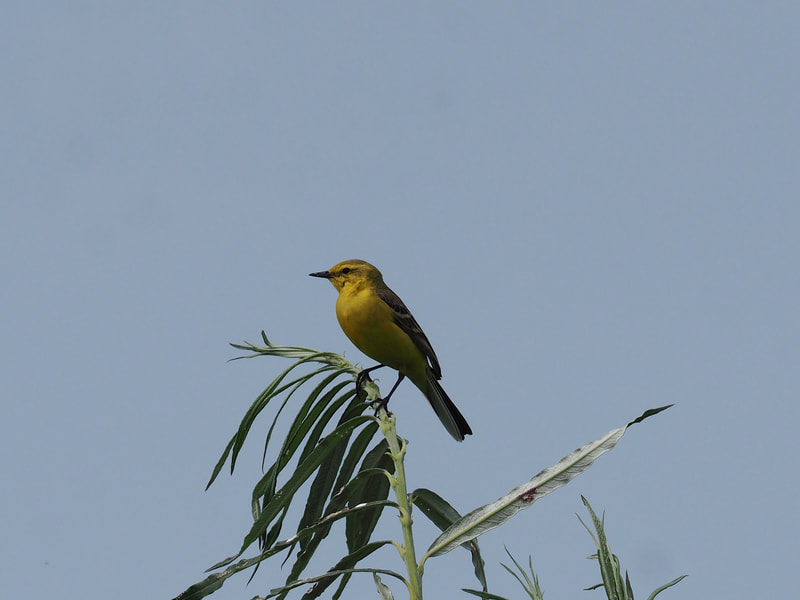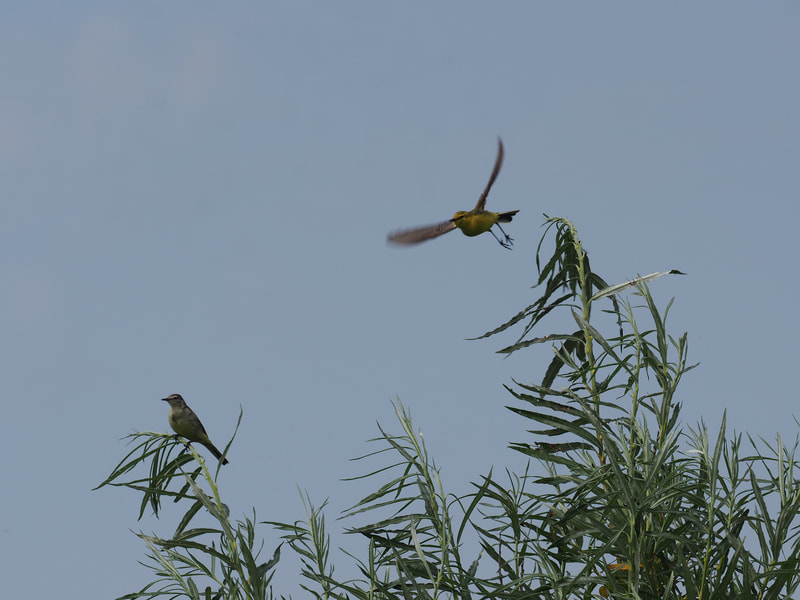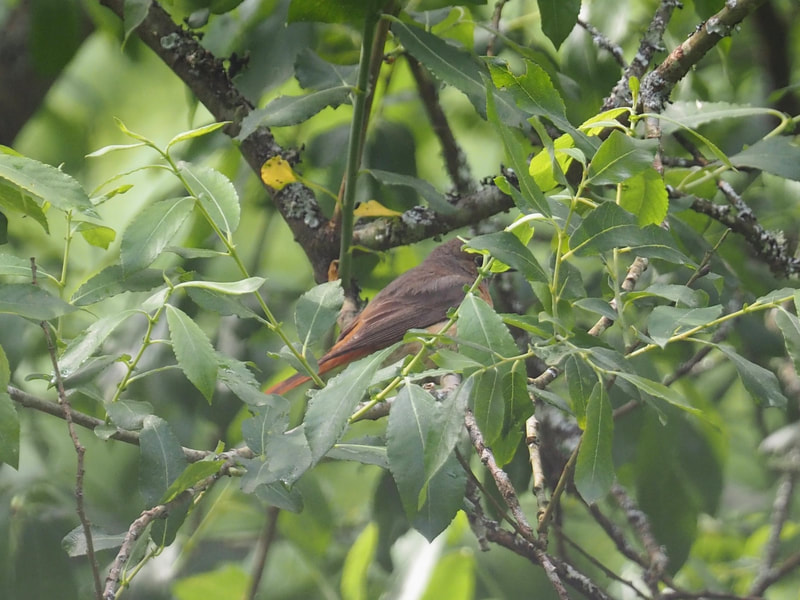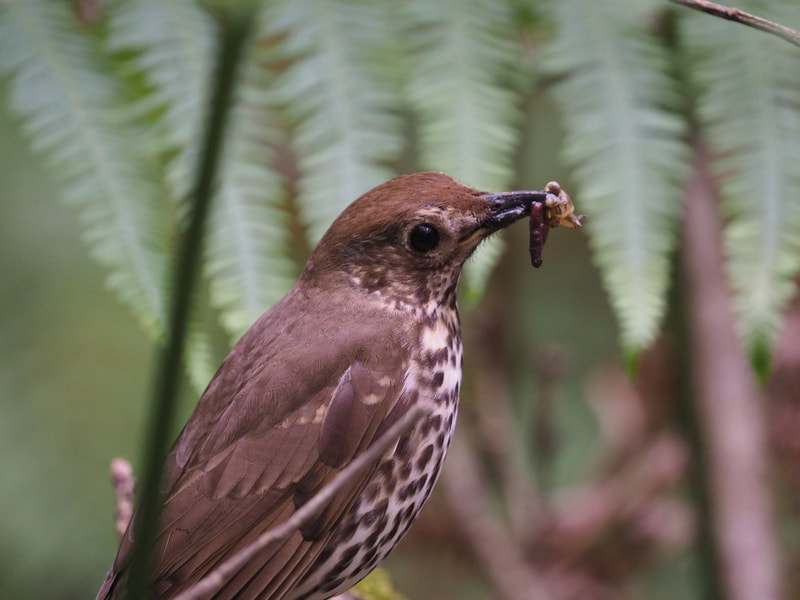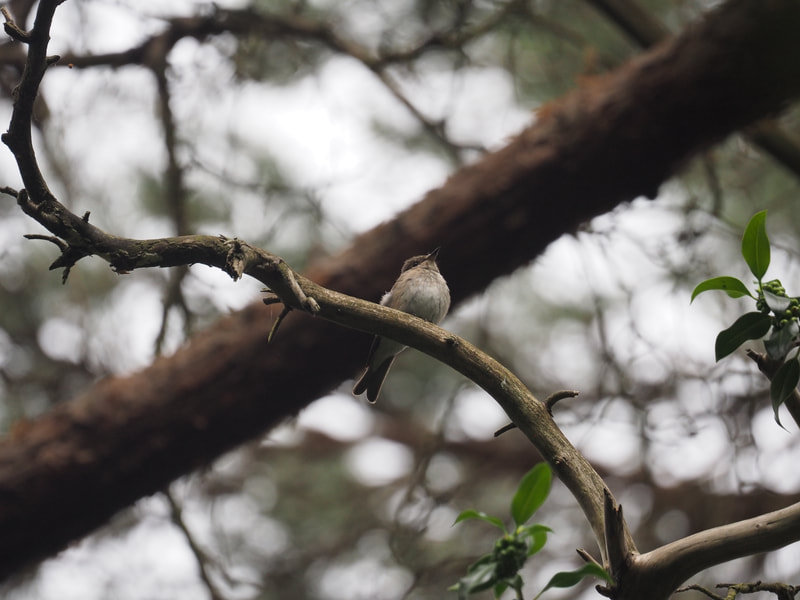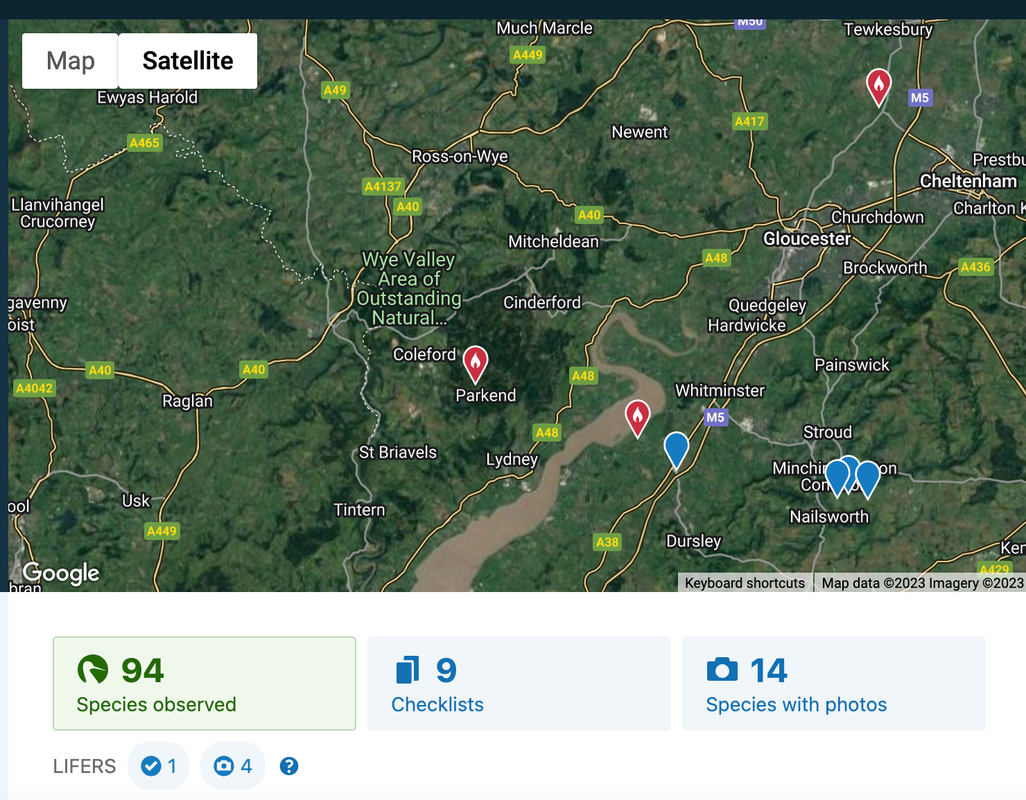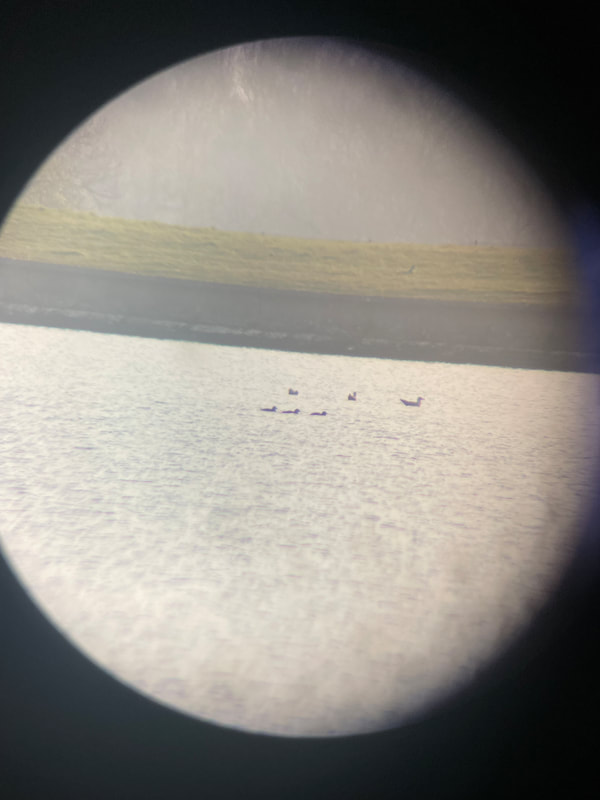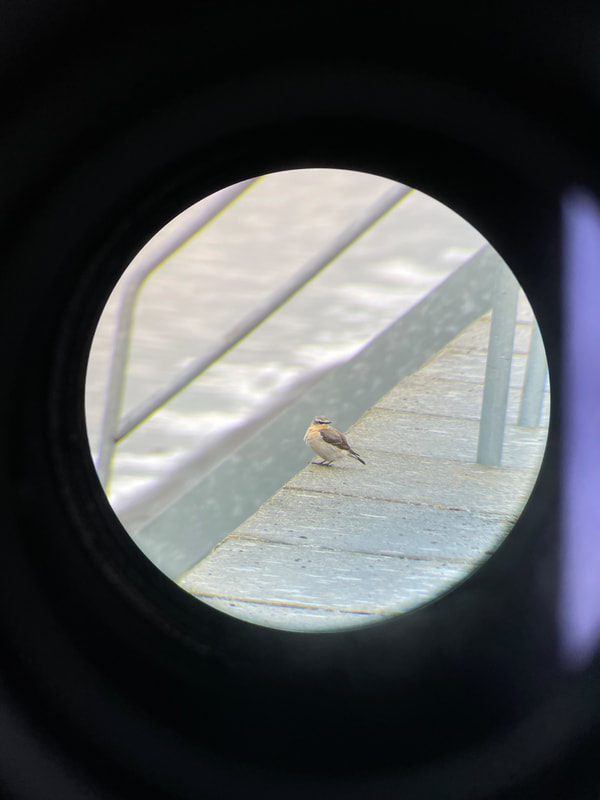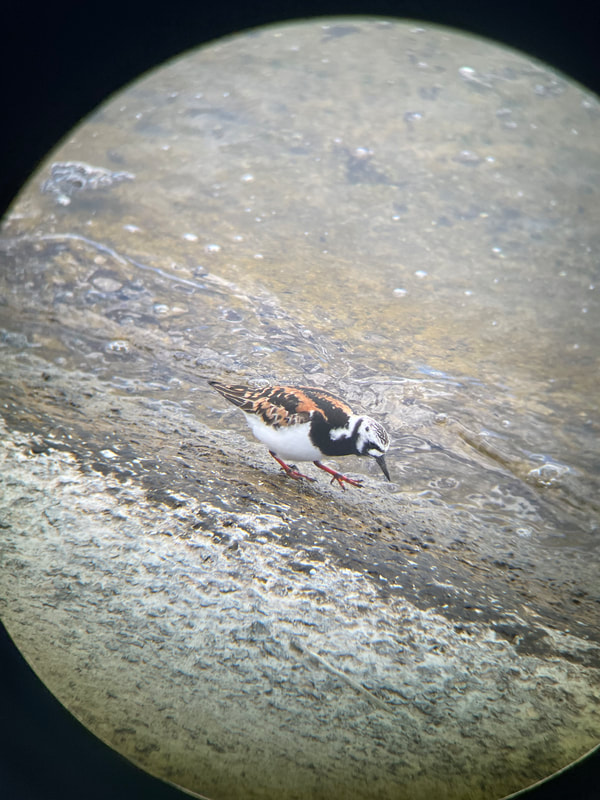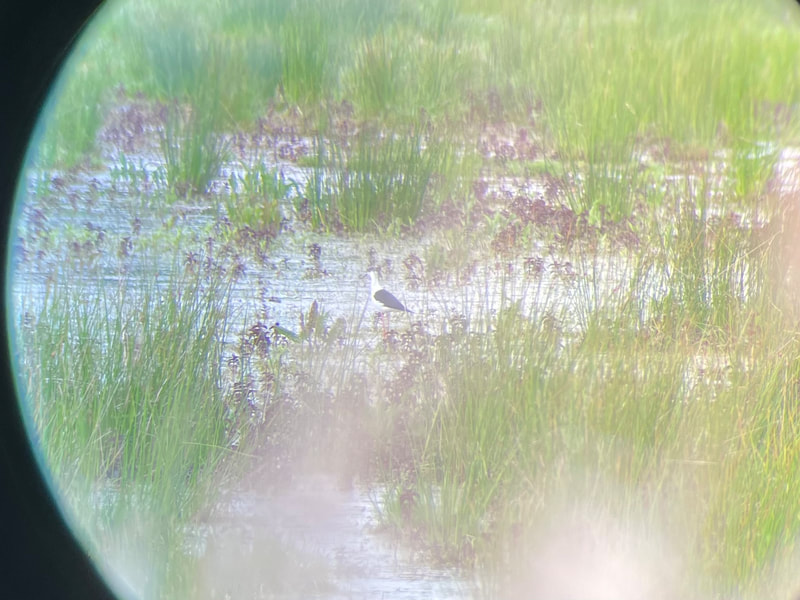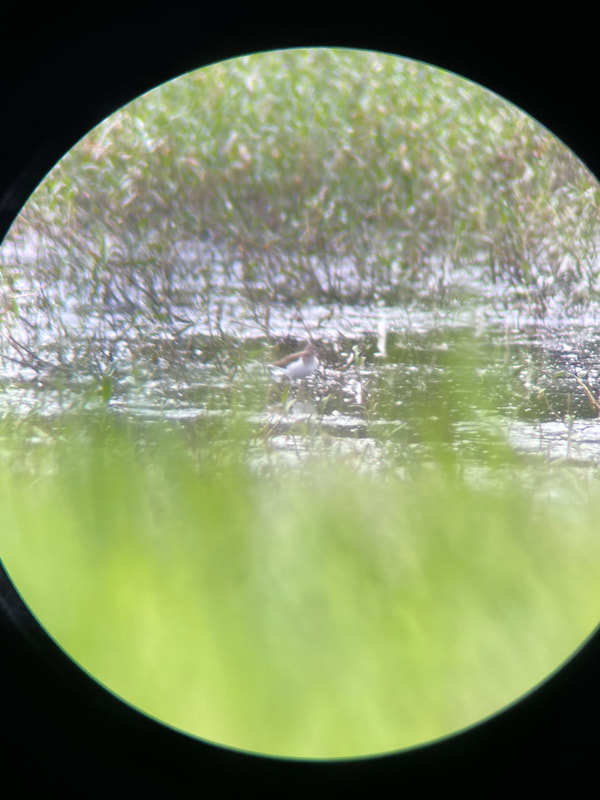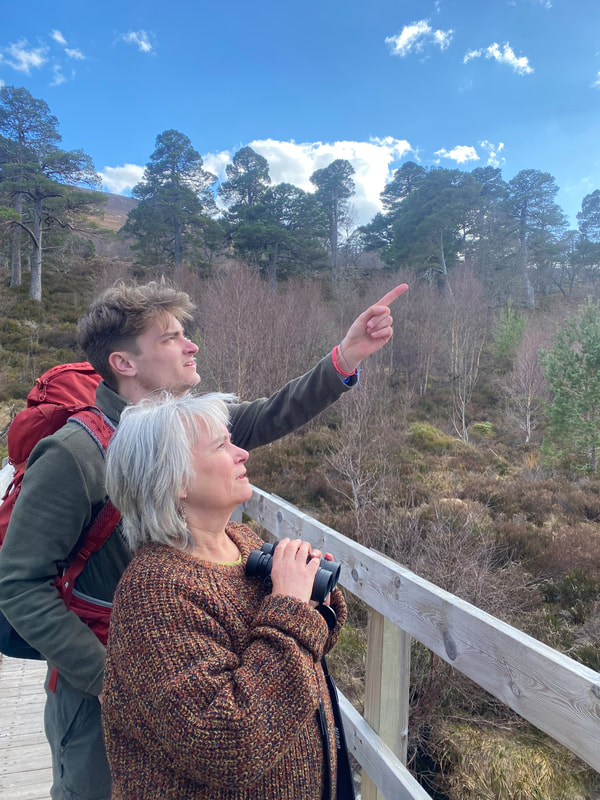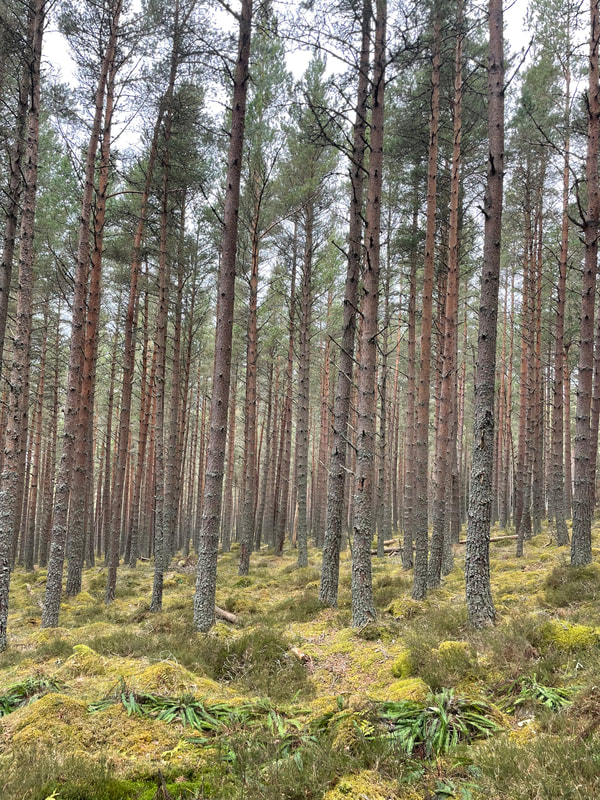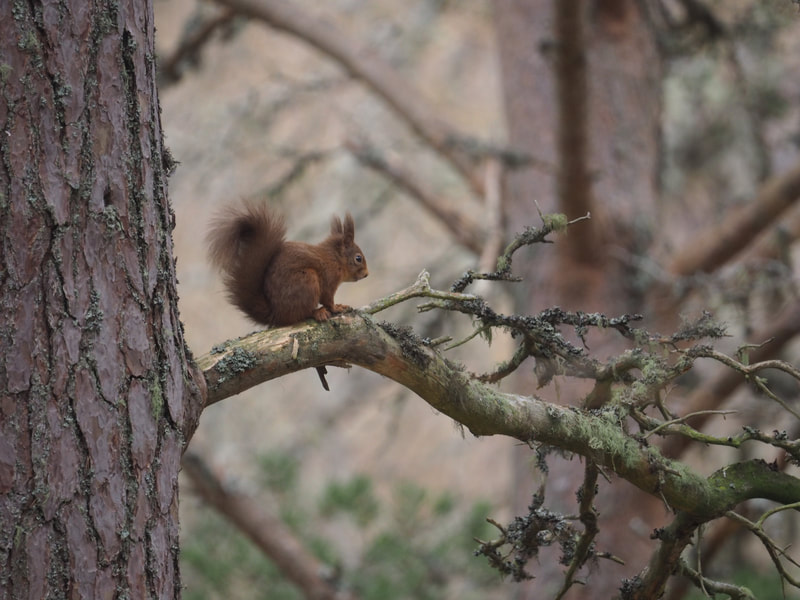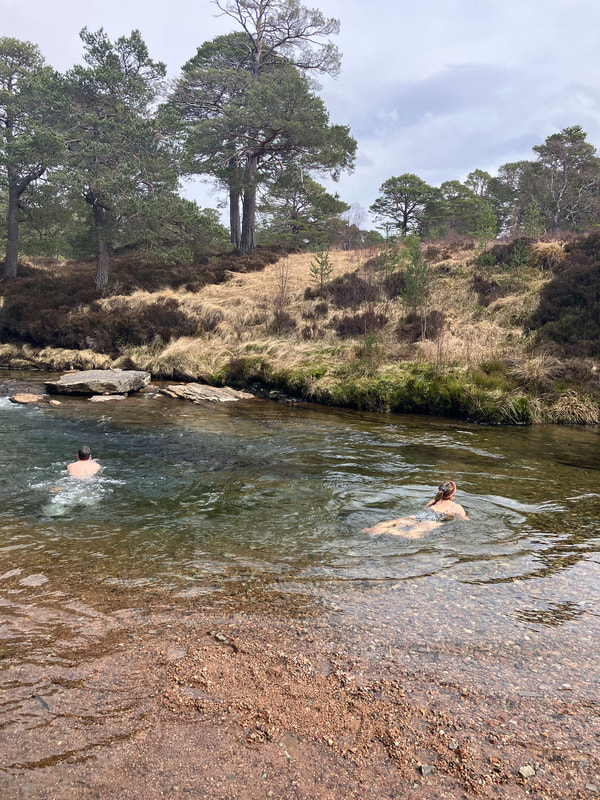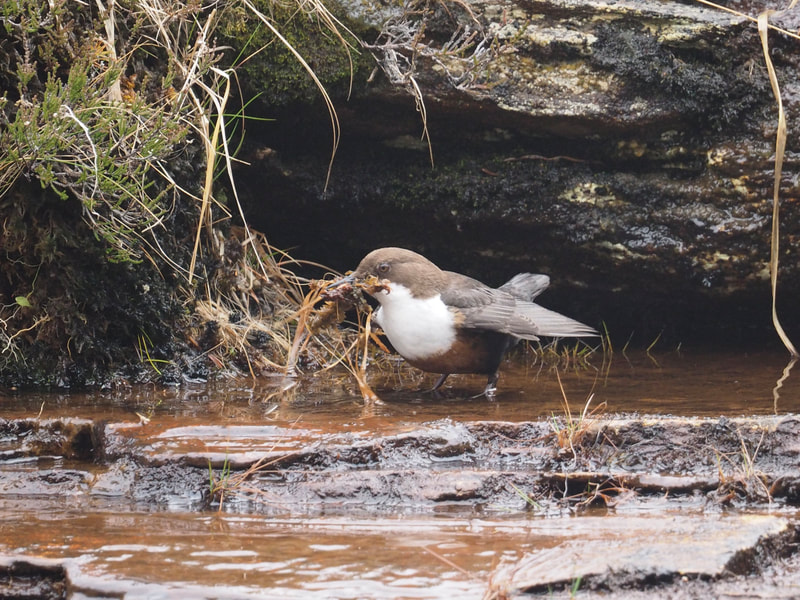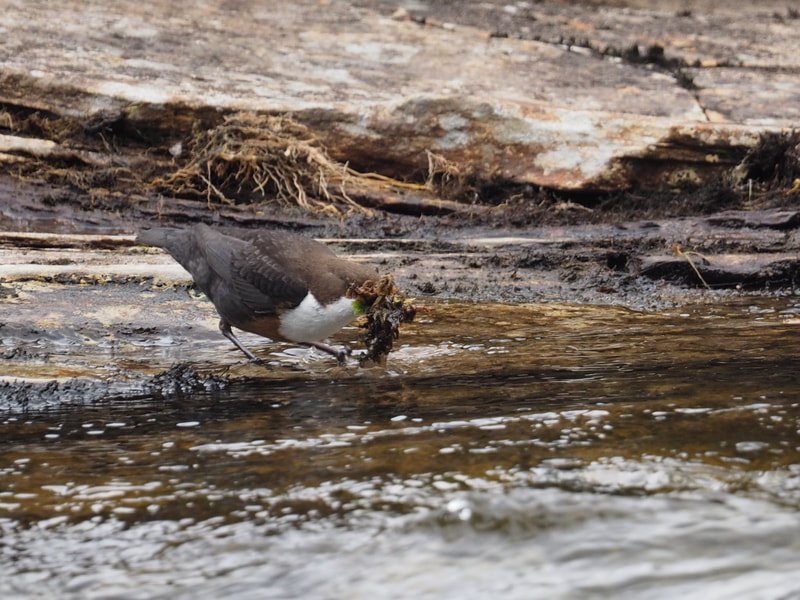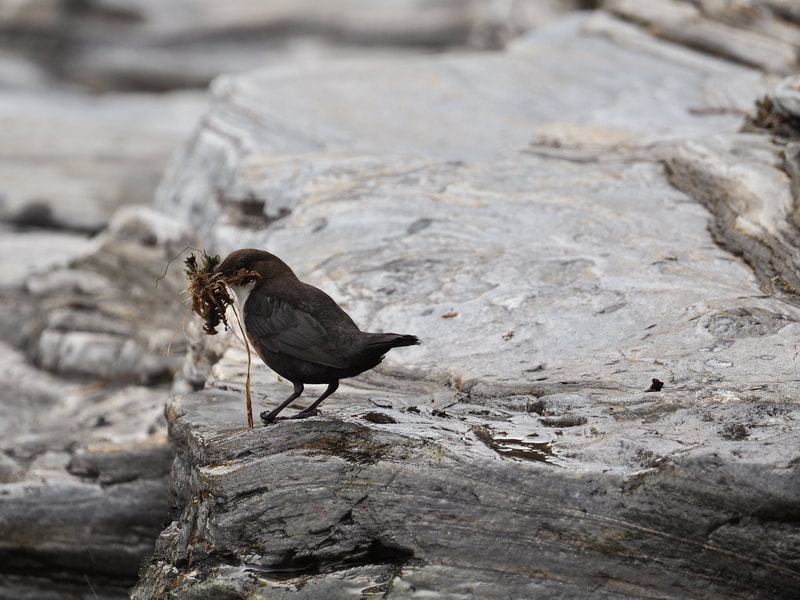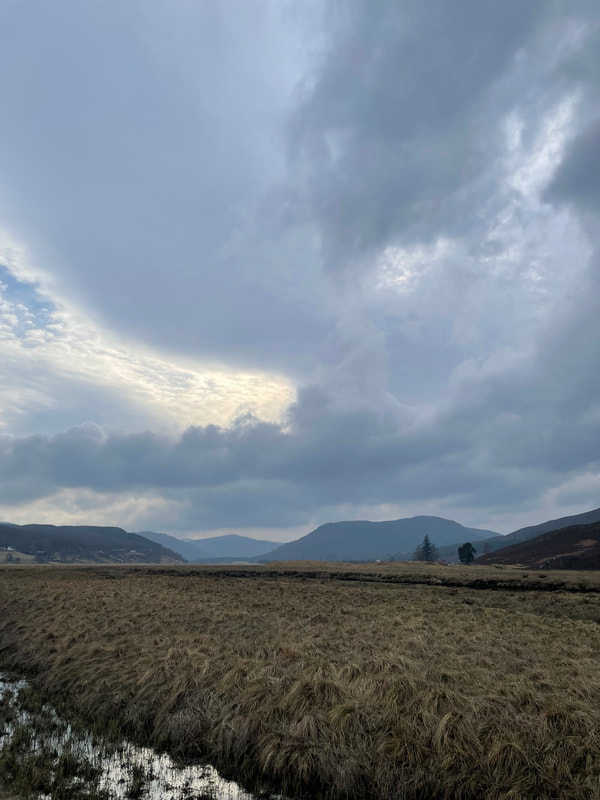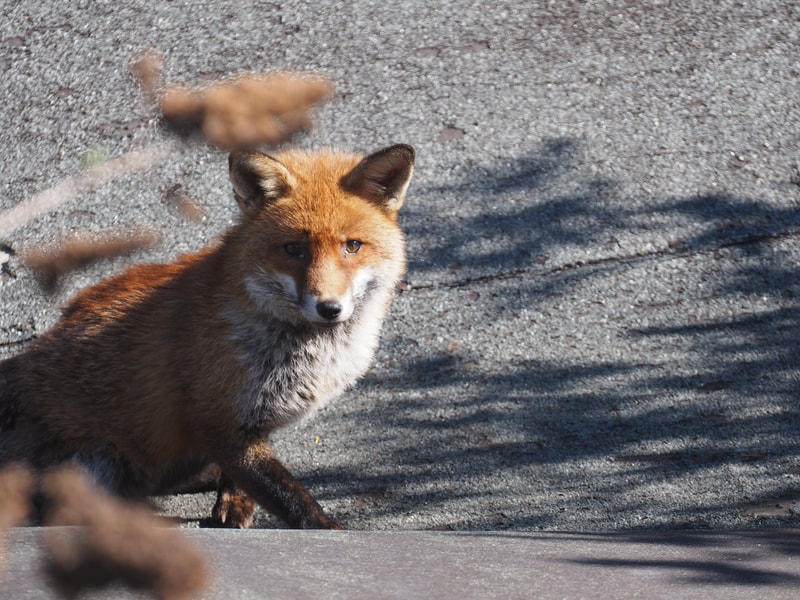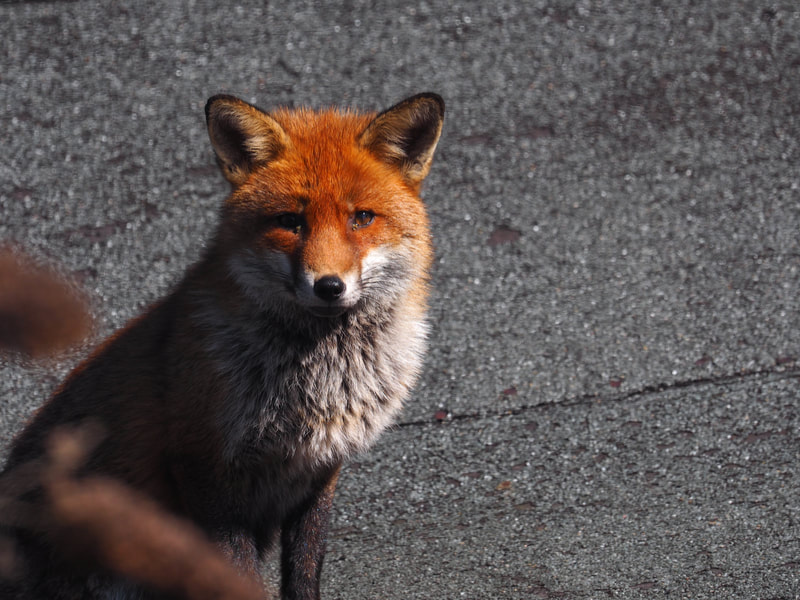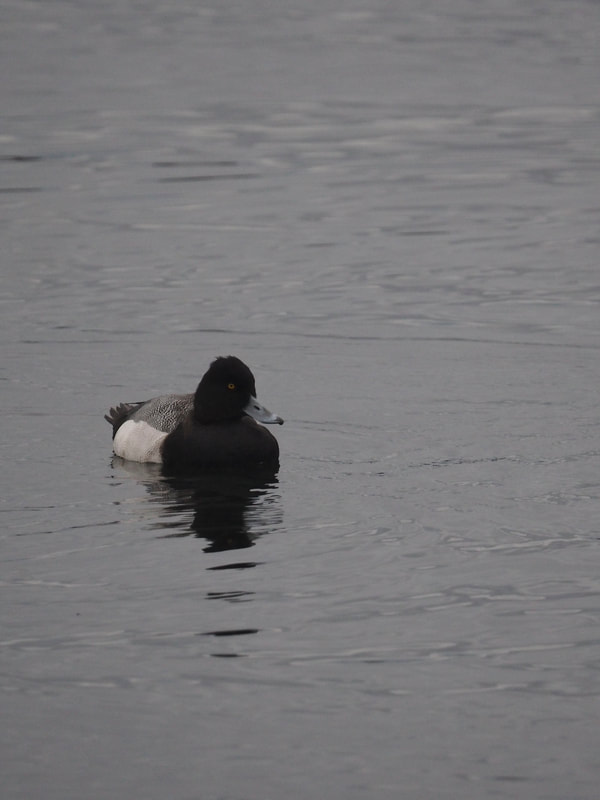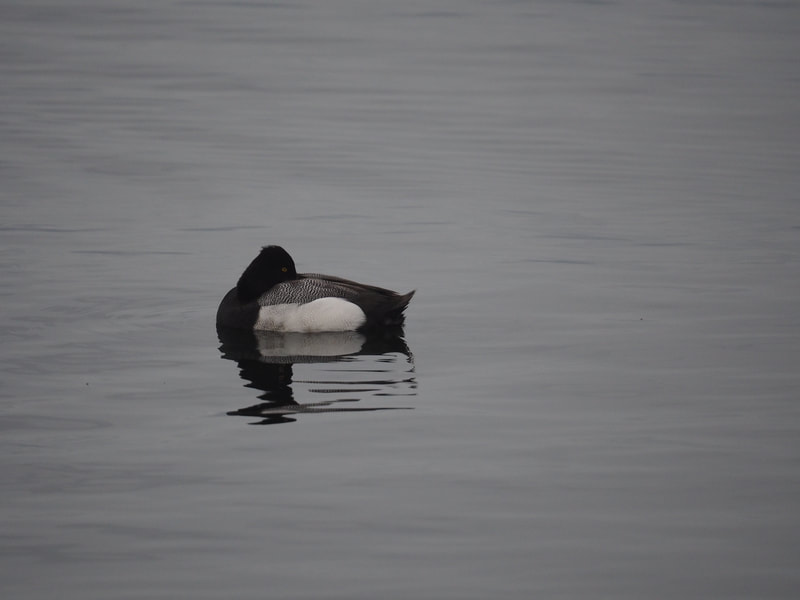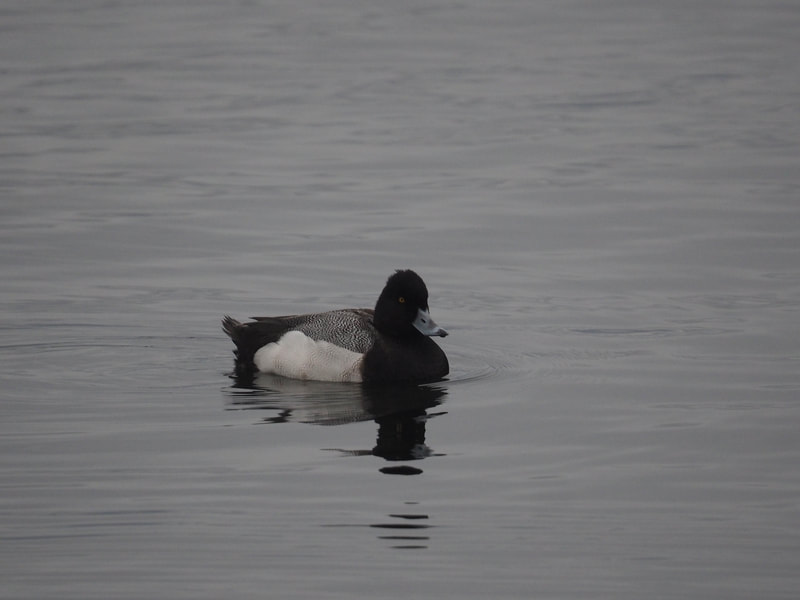|
I recently took another trip down to Portland Bird Observatory with the research group I'm part of for a few days of ringing. Portland is an isle in Dorset, tied to the mainland via a very thin barrier beach called Chesil Beach. It's an excellent place to go birding during the autumn migration period as many birds that have spent their summer breeding throughout the UK treat it as their final drop-off point before making the long trek back to their various wintering grounds. As well as birdwatching, it's specifically a great place to go ringing during this time of the year, and, weather-dependent, the days can become very busy going back-and-forth to the nets to ring and collect data on the many pipits, swallows and warblers which pass through. This year, we had a mix of weather, which allowed both for busy days of ringing at the observatory, as well as some local birdwatching at nearby sites. The highlights of the trip were our visit to Abbotsbury swannery (where we got the chance to ring a few swans, as well as getting good views from an unexpected osprey), and having the chance to ring a couple of new species (including rock pipit, grasshopper warbler and a firecrest). The full trip yielded 96 species in just four days, with the entire trip report found here.
0 Comments
I had another fantastic year in Scilly, and although the weather was probably the wettest, windiest and greyest it has ever been for me during a summer visit, there were still plenty of opportunities to get out and see the wildlife!
It started with a relatively calm crossing on the Scillonian III ferry, accompanied by lots of dolphins, manx shearwater and a few porpoises. Once I arrived, I got to see a lot of species over the two weeks, with the absolute highlight being the pelagics boat trip which I have written on in an earlier post. Other highlights included a great wader-fest evening on Tresco's south beach, with over 100 sanderling joined by ringed plovers, dunlin and turnstones; and 15 Scilly bird firsts for me including a green sandpiper and black-tailed godwit. The full eBird trip report can be found here! I had an incredible trip boating a few miles south-west of Scilly to see what the pelagic wildlife had to offer. Although not one for those prone to sea sickness, it's amazing to see the biodiversity that thrives in such open waters: a smattering of dolphins, many many jellyfish, and singles of fin whale, blue shark and sunfish. However, the highlight for me was, of course, the seabirds. There were hundreds of manx shearwaters skimming the waves, a modest flow of European storm petrels darting through, and an unprecedented four bird species which I've never seen before (sooty shearwater, great shearwater, Cory's shearwater and Wilson's storm petrel)! eBird checklist found here for record shots of some of the species mentioned.
After a couple of months of fieldwork in Wytham Woods, I decided to take a two day break birding in Gloucestershire (an area close to home but one that I have surprisingly never visited any reserves in!). The first day took me to WWT Slimbridge, a site widely-famed in the UK for its diversity and stronghold of certain wetland species. The 4-hour stomp around the site took me to 69 species, including the absolute gem of a returning white-spotted bluethroat. This is a species that is normally only seen as a passage migrant on the east coast of the UK in the spring and autumn as it moves between breeding sites in eastern Europe and its wintering sites in Africa. However, in Slimbridge, a male bluethroat is holding territory for the third year in a row. After acting very elusively for the last few days, on the morning I arrived it was showing beautifully from a nearby shepherd's hut hide and I managed to get some photos - a lifer for me! As well as this highlight, it was also great to see large numbers of avocet, barnacle goose, shelduck and black-tailed godwit at the reserve, in addition to the very graceful black-winged stilt.
On the second day, I visited a couple of sites: Coombe Hill Meadows and RSPB Nagshead. The first of these was a moderately-sized flood meadow with a canal running alongside. Here, there was at least one pair of breeding yellow wagtail, and a great diversity of waders on the wetland scrape. Despite being a lot less than half the size, it provided sightings of just 8 species less than Slimbridge. In the Forest of Dean's Nagshead, I saw a different range of species due to the much more wooded habitat, including spotted flycatcher, siskin and a female redstart. Over the entire trip, I saw 94 species, taking my UK year total to 168 (very close to the number I ended on at the end of 2022!). Trip report available on eBird. With my fieldwork commitments growing over the past month, it has become much more difficult to invest time into proper birdwatching and wildlife photography trips. But with my taking part in the Patchwork Challenge this year, it's been hard to resist regular checks of the flooded parts of my local Marston patch in the hope of some dropping waders, and twitching the rarer species seen within 10k of my home in Oxford. This has led to a few weeks of terrible photos of interesting birds!!
New OxPods episode is out! Found on our website, Spotify, Google and Apple podcasts.
The survival of offspring is essential for the continuation of species, and yet we see a huge diversity in how much parental care is provided to offspring across the tree of life. So how necessary is it to provide care to your young, and what determines the different strategies employed by differing species? In this episode of OxPods, I chat to Prof Ashleigh Griffin, who studies why selection favours social behaviour in the context of reproduction. Have just got back from a really enjoyable Easter and birthday trip to the Cairngorms. I’ve only been to Edinburgh in Scotland before, and so I found the wildlife and landscape in the Cairngorms to be very special and super different to anywhere else in the UK. The pine woodlands had a very ethereal soundscape, with seemingly endless squeaks and chirrups from countless coal tits and siskins. One of the aims of the trip was to see a dipper, a species that, despite being relatively common in regions of the UK, I’ve never seen before. Luckily, we were staying in the small town of Braemar, which has Clunie Water (a tributary of the River Dee) running through it, and so it wasn’t long before I had a glimpse of the species whizzing along the stream like an airborne clockwork toy. A day later, we went for a small hike and wild swimming at Glen Lui, where not only did I see another dipper, but one that was building a nest into the bank of the river.
All in all, the trip was fantastic, seeing 61 species across 4 days, including 4 species that I had never seen before. I will definitely be re-visiting the Cairngorms! New OxPods episode out! Found on our website, Spotify, Google and Apple podcasts.
Darwin’s theory of evolution and selection states that characteristics which aid survival and reproduction will be favoured, however, this doesn’t only refer to physical attributes, but also behavioural ones. But how do behaviours arise, how do they spread through populations, and what role do they play in developing animal cultures? In this episode of OxPods, I interview Dr Josh Firth, a research fellow at the University of Oxford whose research aims to understand how behaviour and ecology shapes social structure in societies. Went to see this lesser scaup at Farmoor today, a real rarity for the county that was found on the 2nd March! The species is widespread across North America, but occasionally they wander across the Atlantic and pop up in Western Europe.
|
Joe WoodmanA blog of my ideas, photography and research of the natural world. Archives
February 2024
|
